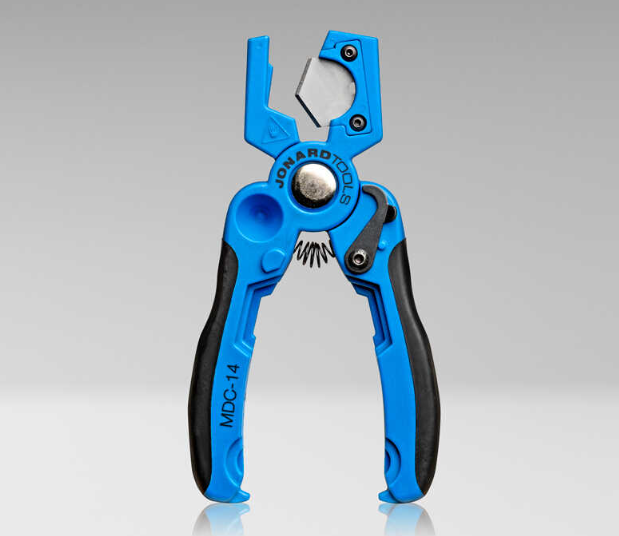
Unlocking Precision in Fiber Optic Installations: The Essential Role of a Microduct Cutter
Key Features and Specifications
1. Blade Material and Design:
The blades of a microduct cutter are usually made from high-grade stainless steel or hardened carbon steel. These materials are chosen for their sharpness and durability. The blade design is critical; it must be sharp enough to cut through the microduct cleanly without causing any deformation. Many cutters feature precision-ground blades that ensure smooth, accurate cuts every time.
2. Cutting Capacity:
Microduct cutters are designed to handle various sizes of microducts, typically ranging from 5mm to 16mm in diameter. This versatility makes them suitable for a wide range of applications, from residential installations to large-scale network deployments.
3. Ergonomic Design:
The tool's ergonomic design is crucial for comfort during use. Most microduct cutters come with non-slip, cushioned handles that reduce hand fatigue, especially during repetitive cutting tasks. Some models feature spring-loaded handles that automatically reopen after each cut, further enhancing ease of use.
4. Safety Features:
Safety is a key consideration in the design of a microduct cutter. Many models include blade guards or locking mechanisms to prevent accidental cuts when the tool is not in use. This attention to safety helps protect both the technician and the equipment from potential damage.
How It Works
Using a microduct cutter is straightforward but requires precision. To begin, the technician inserts the microduct into the cutter, aligning it with the blade. The tool's design allows for a firm, controlled grip, ensuring that the microduct is held securely in place. As the cutter's handles are squeezed, the blades slice through the microduct cleanly. The result is a straight, smooth cut that prepares the microduct for further processing, such as inserting fiber optic cables or splicing.
Why You Need a Microduct Cutter
1. Precision and Efficiency:
A quality microduct cutter ensures that each cut is accurate and clean, which is essential for the successful installation and performance of fiber optic networks. Clean cuts prevent potential issues such as fiber damage or connection problems, which can be costly to repair.
2. Versatility:
Microduct cutters are versatile tools that can handle a range of microduct sizes. This flexibility makes them invaluable for various applications, from installing residential fiber connections to large-scale network upgrades.
3. Safety and Comfort:
With ergonomic handles and safety features, a microduct cutter is designed for comfortable, safe use. Technicians can perform their tasks with minimal risk of injury or equipment damage, making the job easier and more efficient.
4. Time Savings:
Using a microduct cutter speeds up the installation process by providing a quick and reliable cutting solution. This efficiency is especially important in high-demand environments where time is of the essence.
4580
0
747
172

